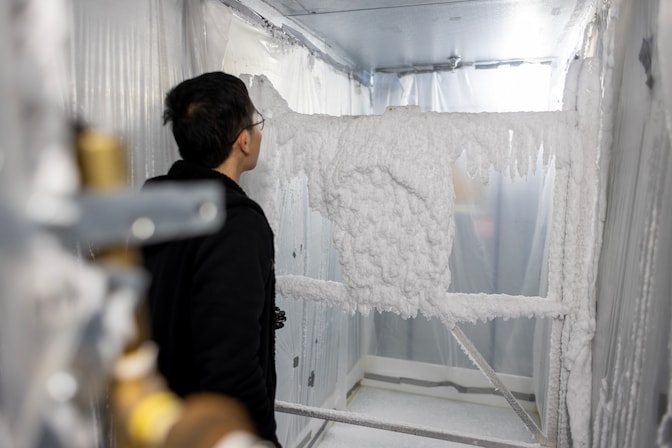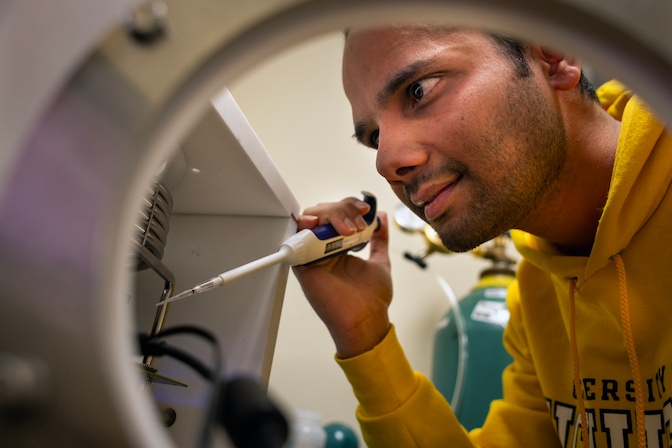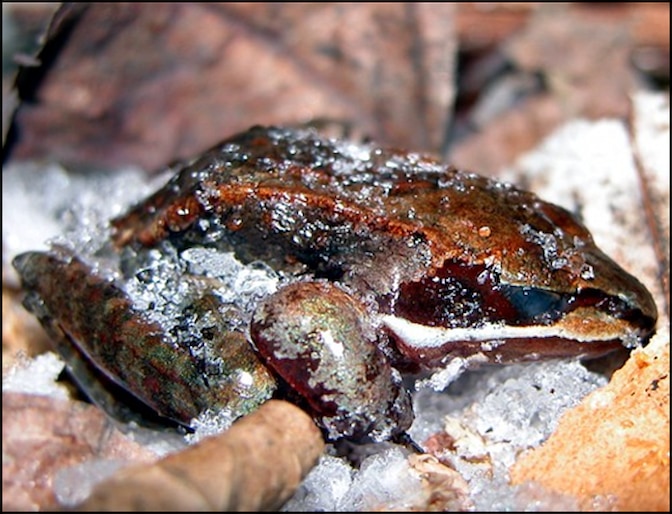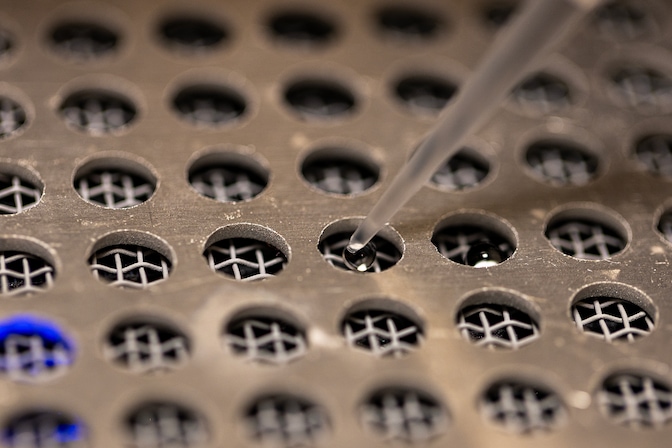
Beating the freeze: Up to $11.5M for eco-friendly control over ice and snow
Taking a page from nature’s book could allow humans to mitigate subzero temperatures without harming the environment

Taking a page from nature’s book could allow humans to mitigate subzero temperatures without harming the environment
Experts

Professor of Materials Science and Engineering
Professor of Macromolecular Science and Engineering
Professor of Chemical Engineering
New, nontoxic materials could one day keep solar panels and airplane wings ice-free, or protect first responders from frostbite and more, thanks to a new University of Michigan-led project funded by the Defense Advanced Research Projects Agency.
The research team will study biological molecules used by other living things to survive freezing temperatures. The project officially begins this week and includes researchers from Raytheon Technologies, North Dakota State University and the University of Minnesota.
Existing materials used to accomplish these feats come with serious downsides. For instance, road salts prevent pavements and streets from freezing but also corrode concrete and enter natural freshwaters through runoff, to the detriment of aquatic life.
Spraying planes with de-icing fluids ensures that winter flights stay safe, but the chemicals in such fluids are toxic and can also pollute waterways. And some of what the researchers aim to make with the up to $11.5 million project has no current analogue, like a lotion that protects from frostbite without heavy winter layers.
“For the past seven or eight years now, my group has been making surfaces that have very low adhesion to ice. Such ice-shedding coatings can be very useful for a number of applications such as wind turbines, power lines or airplane wings,” said Anish Tuteja, the project’s principal investigator and a professor of materials science and engineering at the University of Michigan.

“However, for many other applications, it would be beneficial to completely eliminate ice formation. Preventing ice formation for hours on end in freezing conditions has thus far been very challenging to achieve.”
The project aims to find molecules that can be used to manipulate ice and snow in several ways, including changing the temperature at which water freezes, increasing and decreasing how strongly ice adheres to surfaces, changing the structure of the formed ice and inhibiting or encouraging ice crystals to grow on surfaces.

To meet their goals, the research team is looking to plants, animals and microbes for inspiration. Many organisms produce molecules that allow them to survive freezing solid or stop their bodies from freezing. Wood frogs, for example, produce antifreeze lipids that prevent ice from damaging their cell membranes when they freeze over the winter.
Other organisms produce “ice-nucleating” molecules that stimulate ice to form at warmer than usual temperatures. The bacterium Pseudomonas syringae produces ice-nucleating proteins to freeze plant leaves. The ice helps break apart plant cells so that the bacterium can access the nutrients inside.
By creating and mixing these natural molecules in the lab, the researchers hope to find less toxic and biodegradable alternatives to today’s de-icing chemicals as well as molecular cocktails that could enable brand new technologies.
“If you combine the molecules in the right ratios, the freezing point can decline more than what would be achievable by each molecule individually,” Tuteja said.
When starting from even a small subset of known molecules, the number of possible combinations and ratios can become unwieldy. The research team must measure the effectiveness of over 5,000 different ice-forming and antifreeze molecules within the first year of the project. That number could double or triple as the project progresses.
To quickly study these molecular combos, the team plans to build an automated platform to determine the freezing temperatures of as many as 1,500 samples a day. The team hopes to narrow its search down to the 30 most promising candidate molecules for further study by the end of their first year.

In the second year of the project, the team will test each candidate molecule’s safety and toxicity as well as its effectiveness at larger scales and in several forms, such as liquids, creams and coatings.
These experiments will not only help the researchers find the best antifreeze and ice-forming mixtures—the large dataset will also help reveal how different ice-forming and ice-inhibiting molecules do their jobs.
“Once we start to gather a lot of data on how these molecules work, we will work with machine-learning experts who will be able to determine which parts of the molecule might be modified to further improve their performance,” Tuteja said.